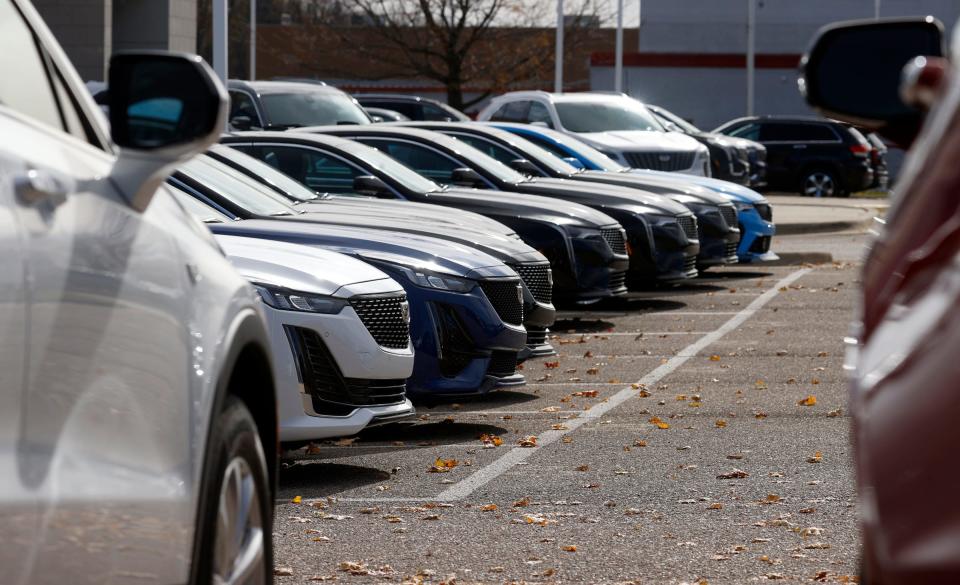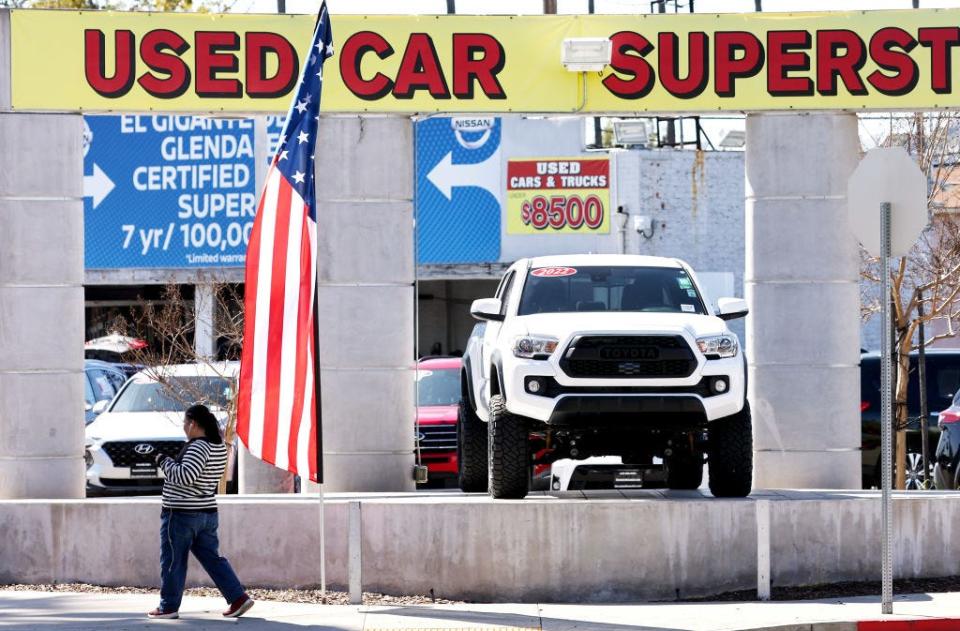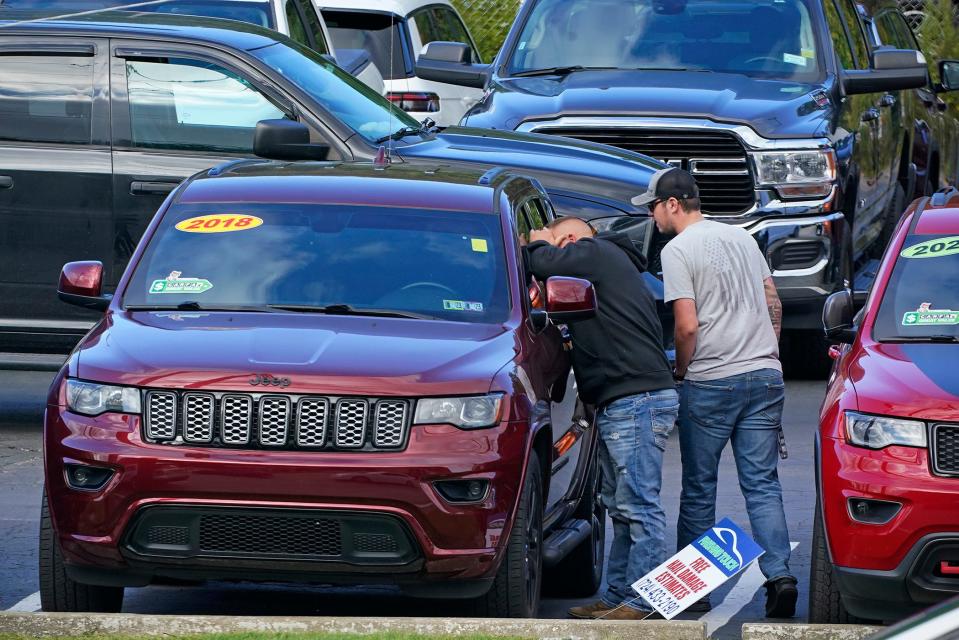Used car prices have dropped from all-time highs. But is now the right time to find a bargain?
If you're looking to buy a used car or truck, there's good news and bad news.
The good news is that prices for used vehicles have come down from the all-time highs of last year. The bad news is that supplies remain just tight enough and demand just high enough that prices remain at historic highs and are not likely to come down anytime soon, according to the first quarter 2023 Used Vehicle Report from car shopping site Edmunds.com.
“Consumers returning to the used market for the first time in years might find conditions a bit shocking," said Ivan Drury, Edmunds’ director of insights. "Not long ago, $20,000 was seen as an acceptable amount to spend on a used car to get an optimal blend of miles and age. In today’s market, $20,000 puts consumers into a much older or much higher-mileage vehicle.”
How can I pay for school: Complete FAFSA. What FAFSA is, who's eligible and when to do it.
You finally can afford a car: Now, what about insurance?

Are used car prices dropping?
The average transaction price for a used vehicle in the first quarter slid by 6.4% to $28,381 compared with $30,329 a year earlier, Edmunds' data showed. But it is up 44% from the first quarter five years ago when a consumer could buy a used car on average for $19,657.
Edmunds' report showed that the share of used vehicles in the quarter to sell for less than $20,000 was about 31% compared with five years ago when it was nearly 61%.

The reason for the high prices: The supply of used vehicles is being squeezed as the number of leases on new cars dropped to 559,000 vehicles in the quarter compared with 1 million leased vehicles in the first quarter of 2018. That means fewer drivers returned vehicles when leases expired to feed the used-car stockpile.
Also, Edmunds data showed trade-in volume declined to 5.5 million vehicles last year from 6.2 million vehicles in 2018.

Car rental companies also factor into the low supply of used cars for sale.
As those companies struggled to get new cars during the parts shortages of recent years, the number of vehicles it would feed to the used-car market dwindled. Now those vehicles coming off rental are much older and pricier than they had been in the past prior to the parts shortage.
As of March, the average off-rental vehicle age had climbed to three years, up from 1.9 years in the same period three years ago. The average price climbed to $28,916 in March from $15,829 in the same period three years ago.
Got a used vehicle? Get money.
But on the new vehicle side of the industry, the share of cars that sold for under $20,000 was less than 1% in the first three months. The transaction price for a new car in the first quarter of 2023 averaged $47,774 compared with the first quarter of 2018 when it averaged $35,784, Edmunds data showed.
But back to that good news again.
If you're a car owner who has held on to a car longer than you otherwise might have because of the high new-car prices and inventory constraints, you will be rewarded for it. Your trade-in is probably worth more now, even if it has more mileage on it, than it would have been had you traded it in sooner, Drury said.
For example, in the first quarter, the average mileage of a 2018 Toyota Camry was 60,565 miles, Edmunds cited in its study. That is a 130% increase compared with this time three years ago when a 2018 Camry trade-in had an average of 26,288 miles on it. But instead of a price decline, the used-car market's slim inventory has pushed the average transaction price of that vehicle up by 8% to $21,223 in the first quarter of this year compared with $19,656 in the first quarter of 2020, Edmunds' data showed.
Diligent shopping more critical than ever

Know your used car values
Those shopping for used cars will need to be extra diligent and research is critical, said Joseph Yoon, Edmunds’ consumer insights analyst. Some shopping tips from Yoon include:
Know your trade-in value. Extra equity from your trade-in is one of your biggest negotiating tools. Before you begin shopping for a vehicle, get a free appraisal from various websites, including Edmunds, so you can factor your trade-in value into your budget.
Shop for preapproved financing. Interest rates for used vehicles are hovering near record levels so seek approval from more than one lender, then with a preapproved loan offer in hand, you can decide if the finance rate the dealership offers is the better deal.
Flexibility and thoroughness. If you’re used to buying 1- to 2-year-old used cars, consider shifting to slightly older cars. Buy from a reputable dealer that offers a detailed vehicle history report.
Know what you're buying. Consider paying a mechanic to do an inspection on the car before buying it and always test-drive the vehicle.
Don't count on bargains this year
Last month, analysts at Edmunds said the average annual percentage rate on new vehicles in the first three months climbed to 7%, compared with 4.4% in the year-ago period. It is the highest level Edmunds has recorded since the first quarter of 2008. It means the average monthly payment for new vehicles was $730 in the quarter, compared with $656 a year earlier.
With that in mind, Edmunds analysts said they expect used vehicle prices to stay high through the rest of this year unless new vehicle sales take a turn.
More: Ford, GM, FCA discounts on new vehicles, leases: Rules for employees, family, friends
Are EV sales declining? Electrifying the car market may be getting harder. Here's why

“If new car sales stall out, automakers and dealers could leverage heavier incentives to entice consumers into new purchases, which would in turn place downward pressure on used car values,” said Drury. “But since most automakers have been deliberate in aligning vehicle production and demand to avoid the inventory glut issues they faced prior to the pandemic. Consumers probably shouldn’t count on any major bargains or discounts through the rest of the year.”
Contact Jamie L. LaReau: jlareau@freepress.com. Follow her on Twitter @jlareauan. Read more on General Motors and sign up for our autos newsletter. Become a subscriber.
This article originally appeared on Asbury Park Press: Used car prices going up? It's tricky, but they've eased from highs.

